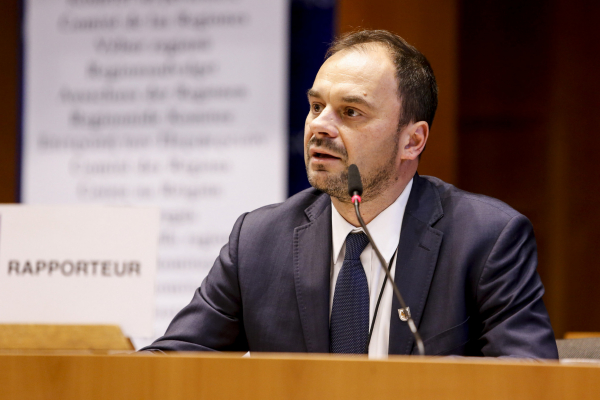Achieving disaster resilient development

Adam Banaszak (Vice President of the Kujawsko-Pomorskie Regional Parliament in Poland) is the Committee of the Regions' rapporteur on the "Action Plan on the Sendai Framework for Disaster Risk Reduction 2015 – 2020: A disaster risk-informed approach for all EU policies.
In Europe and in the world, we are seeing the frequency and the intensity of disasters increase. This is costing lives and is also costing money to tax payers. Between 2002 and 2012, natural disasters caused more than 100 000 deaths annually on average and there is an increasing trend in direct overall economic losses worldwide, with an average annual economic loss of over EUR 100 billion. In 2014, as the CoR we had also taken note that within the EU natural disasters caused 80 000 deaths and EUR 95 billion in economic losses over the last decade.
It will not be possible to achieve economic growth that we can sustain in year to come unless our communities and economies are resilient to disasters. This requires us to conduct risk analysis and increase our resilience to the risk of disasters.
So far at the EU level, we have financial tools (the EUs Solidarity Fund) and mechanisms (the EU Civil Protection Mechanism) that target disaster monitoring and response. However, what we are not doing enough of is focusing on preparing for disasters.
It is now time to embed the principle of resilience into all EU spending. Currently one third of the EU is spent on the EUs regional policy yet investments do not have to be disaster resilient. In light of the ongoing increase in the number of floods and the fact that it is cheaper to build resilient structures than to retro-fit, we have to ensure that all infrastructure built with EU money is disaster resilient.
At the EU level, we also need to recognise that disaster resilient development is a necessity to achieving sustainable development. This means that in our new strategies defining the goals behind which we intended to align our Resources, we have to put disaster resilience as a cross-cutting theme.
The international Sendai Framework for Disaster Risk Reduction 2015-2020 agreed at the UN level is an important international step in recognising the importance of disaster resilient development and the practical steps that each level of government needs to take to achieve this. The new Framework represented a shift away from disaster management to disaster risk management is an important one that we should be emulating as well.
At the EU level, the Commission Staff working document that aims at looking at what this new international voluntary instrument means for Europe and the various instruments that we have is therefore important. At the EU level, we have to recognise that this is a local issue requiring local government to act and take the lead but a coordinated approach is in all of our interests given that disasters do not stop at borders.
Earlier this year, the European Commission proposed to introduce the possibility for the EU to be able to finance 100% of a local project in response to major or regional natural disaster. This is a necessary short-term solution to help those devastated areas but the long-term solution is to make our communities less vulnerable to disasters. If we do not act now, we will find ourselves spending more and more on trying to recover from disasters that are occurring more frequently with increased levels of intensity. We must focus on mitigating disaster risks.

